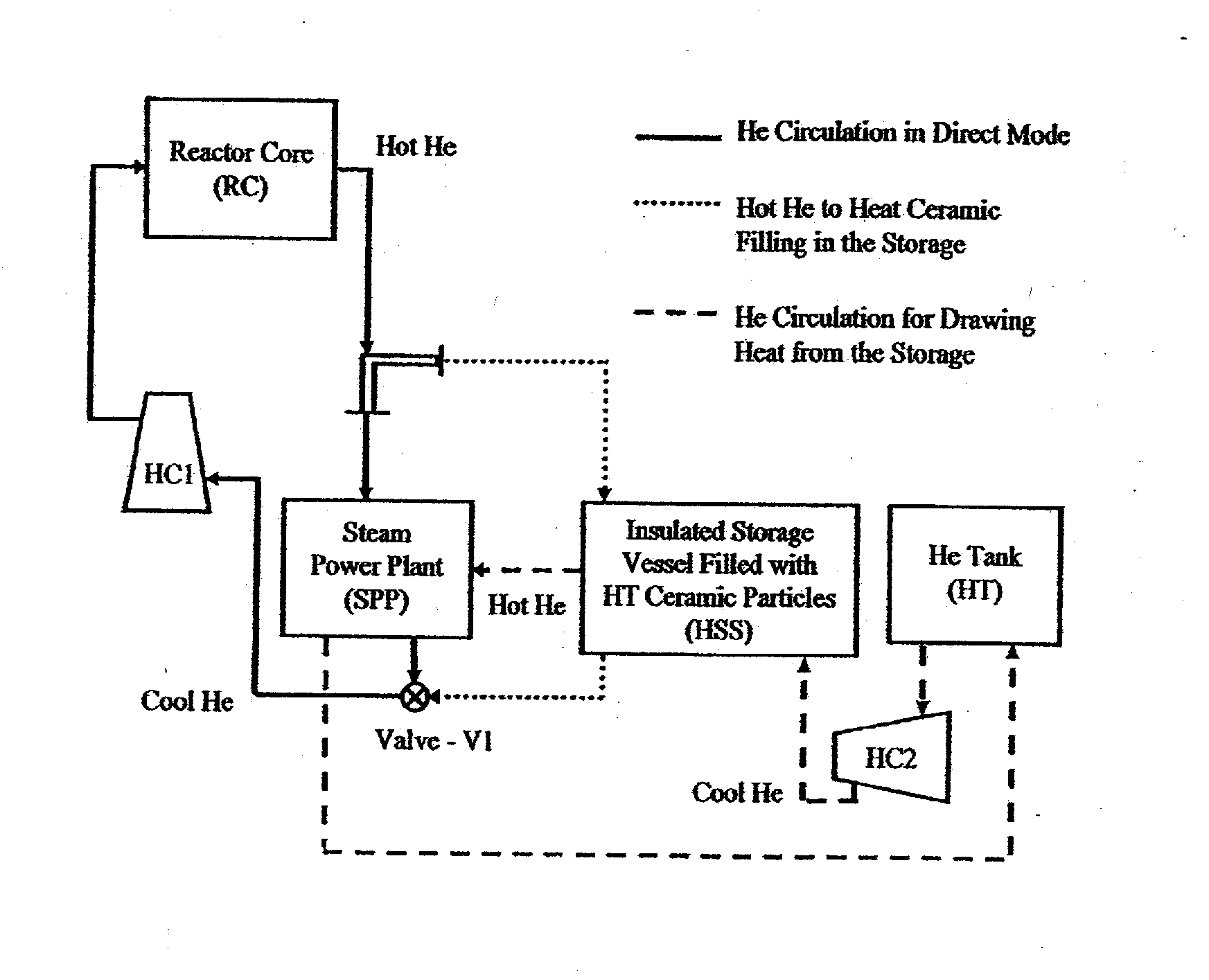System and method for storing energy in a nuclear power plant
a technology for storing energy and nuclear power plants, applied in nuclear elements, greenhouse gas reduction, lighting and heating apparatus, etc., can solve the problems of slow response of nuclear power plants to variations in the demand for power from the grid, high initial cost of investment in nuclear power plants, and serious impact on the potential to become the major source of electricity. , to achieve the effect of high turndown ratio, fast response and large capacity
- Summary
- Abstract
- Description
- Claims
- Application Information
AI Technical Summary
Benefits of technology
Problems solved by technology
Method used
Image
Examples
example
[0052]Consider a 250 MW high-temperature nuclear reactor in which the reactor core RC is cooled by circulating He under pressure. According to the invention, the hot He is used to raise or produce steam in a high-pressure, high-efficiency steam power plant SPP which has a fast response, a high turndown ratio and, can operate efficiently at 13% of capacity. Then, the gas is recycled cold to the reactor core RC. If the maximum capacity of the steam power plant SPP is increased four-fold to 1000 MW, 1000 MW can be delivered for short periods, even though the heat source is sufficient for only an average load of 250 MW. For load following, the output can be varied over the entire range, 150 to 1000 MW. For supplying intermediate power, the steam power plant SPP needs to be increased to 500 MW, operating 12-13 hours a day. In addition, it is assumed that 12 hours of storage might be optimal.
[0053]Assuming also that a steam power plant SPP requires 8000 BTU / KWh, 12 times that amount or 96...
PUM
 Login to View More
Login to View More Abstract
Description
Claims
Application Information
 Login to View More
Login to View More - R&D
- Intellectual Property
- Life Sciences
- Materials
- Tech Scout
- Unparalleled Data Quality
- Higher Quality Content
- 60% Fewer Hallucinations
Browse by: Latest US Patents, China's latest patents, Technical Efficacy Thesaurus, Application Domain, Technology Topic, Popular Technical Reports.
© 2025 PatSnap. All rights reserved.Legal|Privacy policy|Modern Slavery Act Transparency Statement|Sitemap|About US| Contact US: help@patsnap.com


